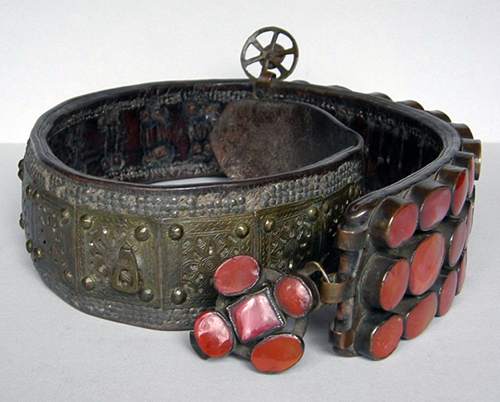The disc shown “on top” actually hangs down from the bottom of the belt, and clearly something (a female utentsil, or a sword) would have often been attached to it. There is no doubt that these belts, often referred to as jakicar, were made in particular in Albania, probably also elsewhere in the Balkans. An English traveler, V. Denton, travelled in 1865 through the area around Lake Scutari (on the frontier between Montenegro and Albania), and there saw small businesses where these belts were made. A recent scholar, Matthias Beitl (writing in 2009), states categorically: “These belts were in the 19th century produced in the area around Podgorica, Shkodra [Scutari] and Gusinje.” While the place of manufacture is not in doubt, some were probably made well before the 19th century, as a number are agreed to look definitely earlier. The belts have been referred to as worn both by women and men, and there is evidence for use by both sexes, though some are adamant that only women wore them. Others are convinced that men wore them too, but probably few who have spent time studying these belts would assert that ONLY men wore them, although some suggest that they were worn only by bodyguards for the Ottoman in the Balkans – so-called Arnauten. The evidence continues to be disputed. We think that at this stage (early 2016) a dogmatic position remains unwise to adopt.
